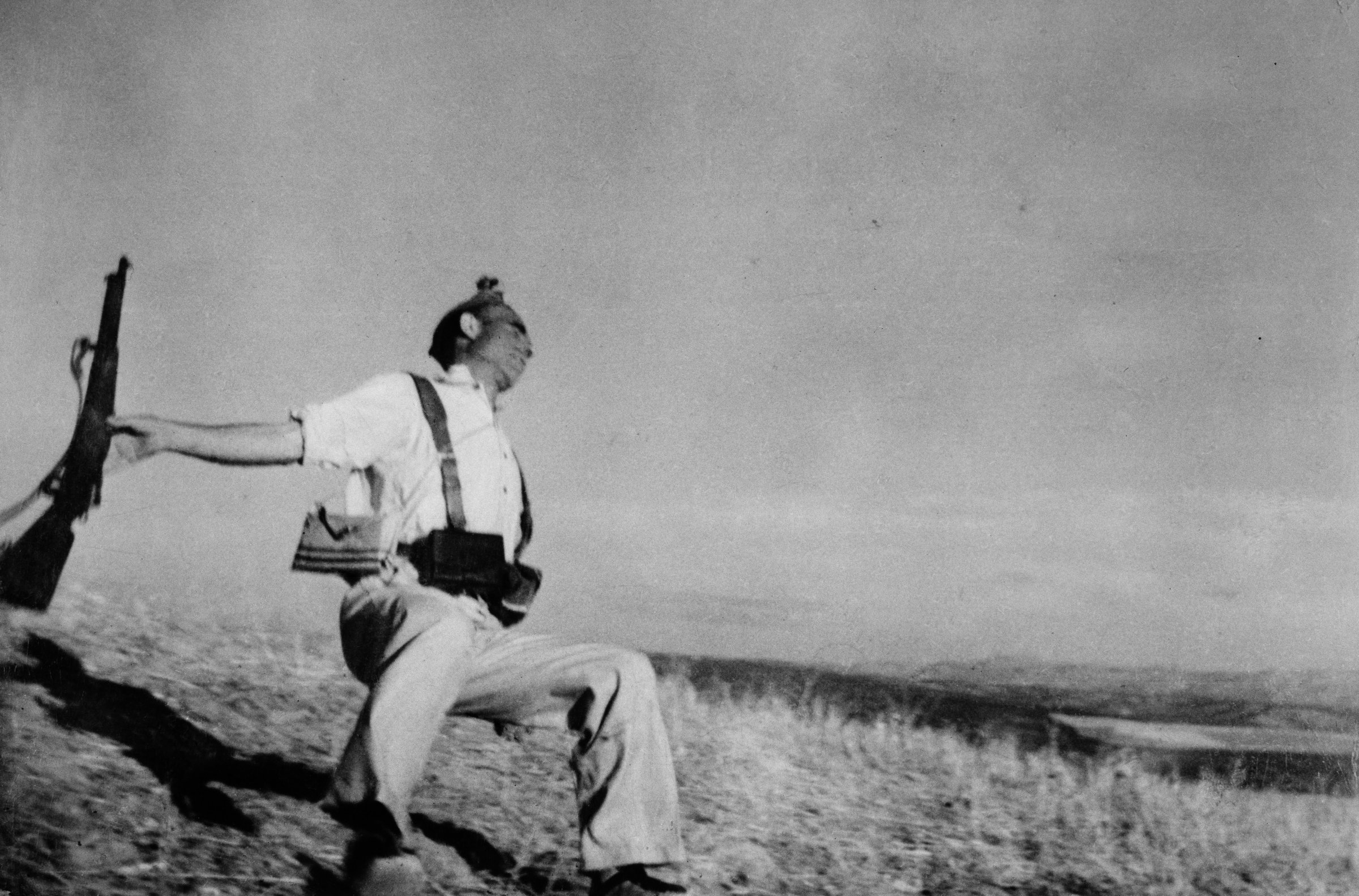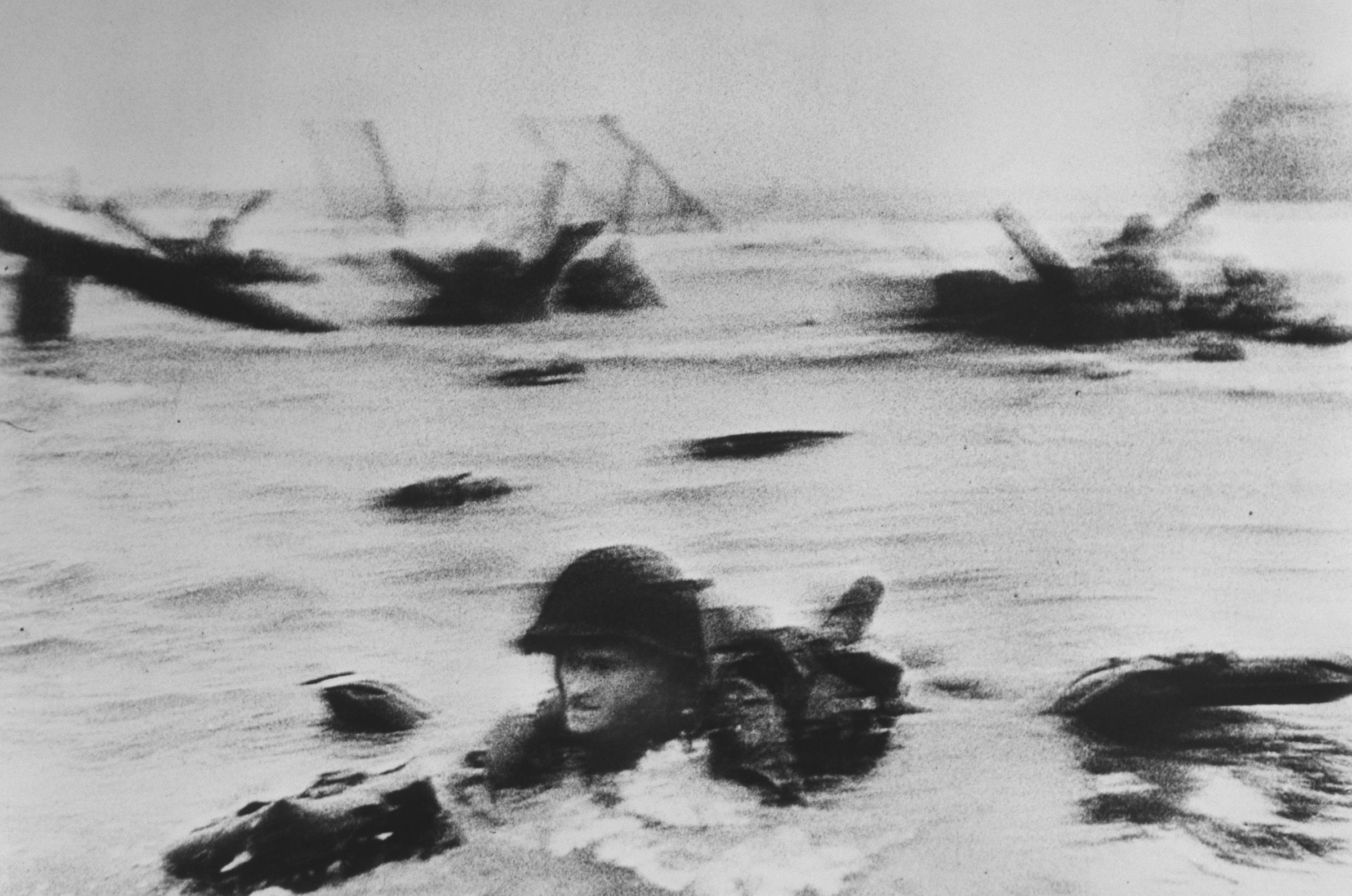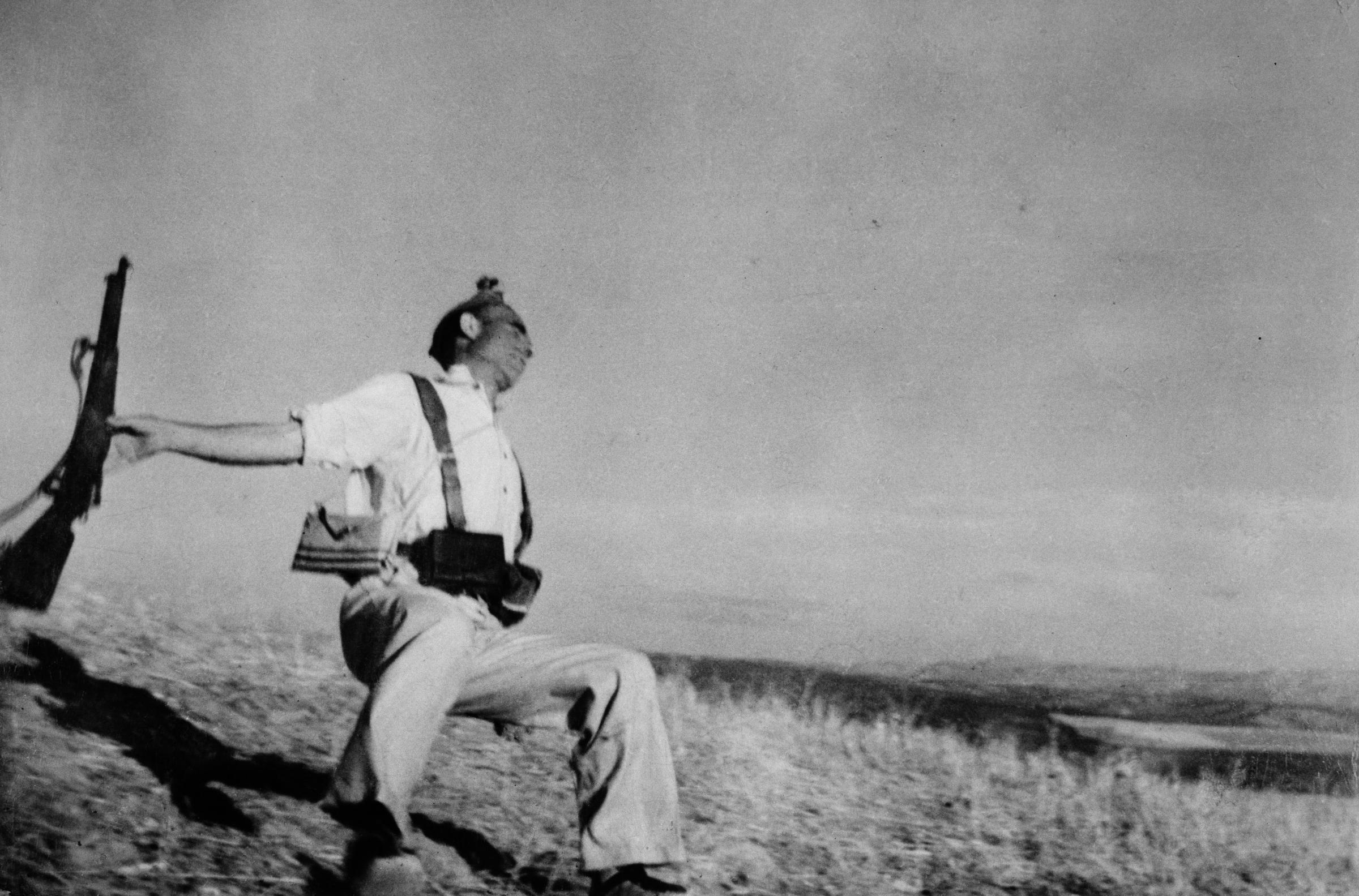
Mexico City, 1995:
At an exhibit of photographs of the Spanish Civil War, a man tentatively approaches Jerald R. Green, a professor of Spanish and Mexican art. He tells Professor Green that he believes he has more than two thousand negatives by Robert Capa, who has been dead for over forty years.
For decades Cornell Capa, Robert’s younger brother, desperately searched for the lost cache of negatives. Cornell tried everything, from advertising in a French magazine to pursuing leads while on a trip to South America. Legend has it that a group even dug up a garden where the negatives were rumored to be buried. Cornell adopted his brother’s last name in tribute and also became a photographer with LIFE Magazine. In 1974, he founded the International Center for Photography.
Now there is the mysterious Benjamin Tarver in Mexico City, claiming that he might have Cornell’s brother’s negatives. Slowly, fitfully, through letters, a conversation begins. Finally in 2007, Trisha Ziff, a documentary filmmaker living in Mexico City who is acting on Cornell’s behalf, meets Tarver at a coffee shop. There, Tarver shows her three contact sheets that clearly come from Capa’s negatives. She is stunned.
The pieces of the story are put together: at some point the boxes of negatives were turned over to General Francisco Aguilar González, the Mexican ambassador to the French government in 1941 or 1942. During the Spanish Civil War, Mexico had supported the Spanish Republic, sending over ammunition and other supplies. As the war ended, and Spaniards were stranded in camps on the coast of France, the Mexicans reached out and offered asylum. Over twenty thousand sailed to Mexico and made it their home rather than stay in Spain, where they might be shot or imprisoned. More than one hundred thousand refugees would eventually come to settle in Mexico
The general’s daughter, Graciela Aguilar de Ona, knew Tarver as a close family friend; one day she pulled him aside, opened a plastic bag, and showed the boxes to Tarver, asking what she should do. This prompted him to approach the professor at the exhibition of Spanish Civil War photographs.
In December 2007, the negatives arrive in New York City in their cardboard boxes. Miraculously, because of the temperate weather in Mexico, the negatives are in near-perfect condition. Slowly, with white gloves, the curators at ICP slip the negatives out of their compartments and unwind the tightly wound spools. Some of the negatives from Mexico exactly line up with those that were missing. “Two disparate pieces of a jigsaw puzzle,” explains Brian Wallis, the head curator.
The curators cannot believe their good luck. And, just a few months before he passes away, Cornell is able to touch the original film of his brother’s early work in Europe and Spain.
There are 4,500 images in all.
And so the photographs live on. The lost images, in a way, became refugees just like Capa, like so many photographers—winding their way across oceans and continents, in flight from their origins, bearing witness to all they have seen and experienced. They are the residue that washes up after this terrible history has subsided—the testimony that allows us to see.
Even for those who came to doubt the Left, the Spanish Civil War remained a pure struggle, a pure time in their lives. As [George] Orwell would write: “Curiously enough the whole experience has left me with not less but more belief in the decency of human beings.”
Despite the failure of their cause, all of them—the journalists such as Gellhorn, Orwell, Capa himself—looked at the Spanish Civil War as the most idealistic time of their lives. In Spain they discovered themselves as vital, dynamic young people, tasted freedom, stepped out of the routine of their lives to glimpse a vision of a more egalitarian society.
Pepita Carpena, who joined the anarchist party in Barcelona as a teenager in the early days of the fight, reflects: “We lived those years intensely. It was constant struggle, revolution, emancipation . . . where you realize that freedom is necessary.”
“Youth was born in Spain,” Jay Allen wrote. He meant that, being young, one could envision—and fight for—a better world.
Now restored, these photographs remind us of what was so crucial and important about that moment in history.
Adapted with permission from Eyes of the World: Robert Capa, Gerda Taro, and the Invention of Modern Photojournalism by Marc Aronson and Marina Budhos (Henry Holt and Co.)




More Must-Reads from TIME
- Cybersecurity Experts Are Sounding the Alarm on DOGE
- Meet the 2025 Women of the Year
- The Harsh Truth About Disability Inclusion
- Why Do More Young Adults Have Cancer?
- Colman Domingo Leads With Radical Love
- How to Get Better at Doing Things Alone
- Michelle Zauner Stares Down the Darkness
Contact us at letters@time.com